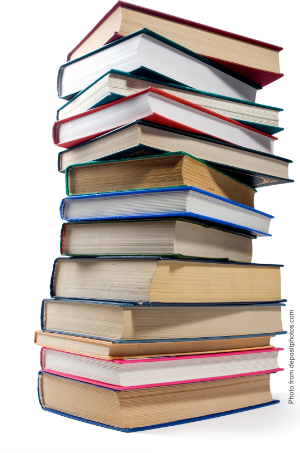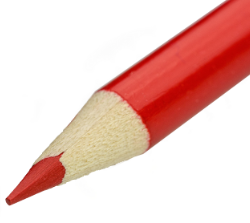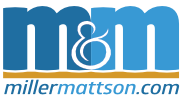 From start to finish, completing a book is a project with many steps. Below are the questions that we will ask when you contact us for help with your project. Your answers will help us assess how we would approach your project and determine the time that it would take us to complete it.
From start to finish, completing a book is a project with many steps. Below are the questions that we will ask when you contact us for help with your project. Your answers will help us assess how we would approach your project and determine the time that it would take us to complete it.
If all of this looks like a bit much, contact us! We are happy to meet with you to help you determine which steps you need and how to proceed.
General questions
Following are the basic questions that apply to every project.
- What is the length of the project, expressed as the count of pages or words? [Estimating word-count]
- What type of document are we working on? If non-fiction, which industry, technology, or field? If fiction, what genre?
- What is the audience for the document?
In addition to these general questions, please answer the questions below for those steps that you need. The steps that may be included in your project are Import, Editing, Layout, Indexing, Graphics, and Publishing. Skip the steps that don’t apply to your project.
Import questions
It is ideal to receive content that has been input into a computer, however sometimes the content was written longhand, or you have a hardcopy but the files are long gone. We can pull the content into a file for you, then check that the file’s content matches what you provided. If your content is already available electronically, then skip this step.
- Is the content handwritten or is it typed?
- What condition is it in? [Why we ask about this]
Editing questions
There are many levels to editing, depending on the quality of the writing and much more. Different companies may break this down differently, but we see editing as a continuum with three general types of activities: Proofreading, copyediting, and developmental/continuity editing. [More on the different types of editing]
- Has the document been edited before?
- Is English the author’s primary language?
- How would you describe the condition of the writing in this document. For example, is it rough, is it just in need of some polish, is it nearly ready to print after a final check?
- Which level of editing do you expect the document needs: Proofreading, copyediting, or developmental/continuity editing? [More on the different types of editing]
- Do you have a documented styleguide, or shall we use our own? If there are exceptions, please tell us what those are. [About our styleguide]
- Is there an index in this document? A table of contents?
- Do you need us to fact-check or do other research?
Layout questions
If you have a publisher, then layout is probably in their hands. But if you are self-publishing, your document isn’t finished until it is laid out into its final publication-ready format. [More about layout]
- How will this document be published?
- Do you have a template or written specifications from a publisher or printer?
- If we are creating your template, can you point us to one or more documents that we can use as a model for your document?
- For book publishing, do you need assistance with generating front matter?
- Do you have an ISBN or would you like us to supply one?
Indexing questions
Lengthy technical documents or non-fiction books can benefit from a robust subject index or even multiple indexes. [More about indexing]
- How detailed should the index be? Do you need more than one index?
- Can you provide a list of required words to include in the index?
- Can you refer us to an index that we should use as a role model for the complexity and format of your index?
Graphics questions
Many documents, especially fiction books, require only a cover, while some documents contain illustrations or other graphics. If you are working with a publisher, they may take care of this step, but for self-publishers, this is a step you’ll need to take. [More about graphics]
- What types of graphics do you need?
- How many different internal graphics will you need?
- For charts and other data-based graphics, can you provide a spreadsheet with the data?
- For cookbooks and some how-to types of books you will likely use photography. Do you already have photos or a photographer lined up?
- Can you refer us to existing graphics to show us a style that you would like us to emulate?
- For book covers, we will need to have a conversation about what you are looking for.
Publishing questions
Once your book is ready to go, what’s next? We have published books and other documents using print-on-demand (POD) services, and by sending files to an offset printer to print in bulk. We can help you decide which method to use, and then we can take care of the publishing for you.
- Will you want to sell this document?
- Do you have a bulk need for printed books or documents, such as a trade show or other event?
More details
Estimating word count
In order to estimate and schedule your project, we need to know how big it is. For corporate and marketing projects, a page-count is what we need. For longer projects, such as a book, we need to know the word count. If your book was written using a word processor, it can tell you the word count (here are instructions on how to do that in different programs). If your book was written longhand or with a typewriter, get the page-count by counting the number of words on a typical page and then multiplying it by the number of pages. [back to top]
Why we ask about the condition of your document
For hand-written content, unless it is non-cursive and written extremely neatly, we will have it typed. For other content we will scan it, and run it through optical character recognition (OCR). The condition of the document will impact the quality of the OCR, for example badly faded pages would render poorly. Regardless of the method we use to import our content, we review and proof it for accuracy. [back to top]
More on the different types of editing

While we charge a flat rate for all types of editing, some types take longer to do than others and so affect the overall cost of your project.
Proofreading: The simplest level of editing, proofreading is appropriate for documents that have already gone through several drafts, have undergone at least one round of editing, and is considered to be at the final stage prior to going to layout. This includes a check of basic grammar, tense, spelling, and punctuation. Usually a document at this stage will have very little left to change.
Copyediting: Appropriate for documents in an earlier stage of editing or which needs more than a proofread. In addition to those things included in Proofreading described above, this includes editing for word choice and sentence structure. This also includes checking figures and other numbering.
Developmental/continuity: The most complex level of editing, this is appropriate for documents in an earlier stage of editing, for authors for whom English is a second language, or for authors for whom writing is not a top skill or who otherwise just need help. In addition to those things included in Proofreading and Copyediting above, this includes editing for continuity and document structure, and may include some writing and content development.
Research: Regardless of the type of editing needed for your project, you may also need some research. If your document lists facts or other works, includes trademarks, or otherwise has information that you want checked, we can research that for you.
[back to top]
About our style guide
Unless your organization (or industry) has a different go-to source, we defer to the Chicago Manual of Style for our editorial work. This includes but is not limited to what is shown in the list below. When we edit your project, if you want any of these matters to be handled differently, just let us know before we start the editing work.
- Use of the Oxford (serial) comma.
- Only one space after a sentence.
- All punctuation (other than colon) inside quotations unless publication is targeted for Europe or UK.
- Minimized gratuitous capitalization.
- Favored US spelling unless publication is targeted for Europe or UK.
- Sentence-punctuated bullets.
- Trademarks in professional publications are noted on first use and in the document ™ statement. Trademarks in books are noted only in the front matter.
[back to top] [check out the M&M Style Guide]
More about layout
Whether you plan to distribute your book as a PDF or a printed book, authors publishing on their own must get their book into its final print-ready form. This step always includes one or two rounds of client review and revision.
Template/Design: Some authors have a template to work with, typically as written specifications of the page size, margins, fonts, and other details; or as an editable file that has all those details set up. Other authors come to the project with none of these decisions made and we help them with the design of their book. Projects intended for print are laid out to the specifications of the printer or publisher, so we would need to be put in touch with them so we can ensure we are meeting those expectations.
Software: We use Adobe inDesign for layout, which is the industry-leading software used by most publishers. We can also do your layout in Microsoft Word, but note that this software is not designed for professional layout so this may limit our design options and increase the time your project requires.
Layout:Projects destined for print or for distribution as a formatted PDF require complete layout, including details like page numbers, running heads, front matter, optional indexes, and more. Only a book that has gone through a complete round of editing should go to layout, as making changes to the content after it is laid out is more difficult. That said, sometimes there are changes that you will only see once it is laid out. After we prep the file to remove extraneous formatting, spaces, and hard-returns, we flow your content into the layout and set all the formatting styles. We will then send you a PDF for you to give a lengthy, thorough review. We will then revise the book per your feedback, then generate your final files.
Deliverables: When the project is finished, we provide you with a final web-ready file, as well as a print-ready file. We also give you an archive of all the source files that were used to produce your book, which typically includes InDesign files, graphics, and any other files used to create the final file. If a proprietary font was used to produce your book, that will not be included in the source files.
[back to top]
More about indexing
An index is generally only included in non-fiction works. For these books, a robust, thorough index can make it a far more usable book to its readers. The index is generated only after layout, and can be formatted in a number of different ways depending on how detailed or formal you want it to be. It would be very helpful if you can supply a list of required words to include, however we can work without it. This step always includes one or two rounds of client review and revision. [back to top]
More about graphics
We design and produce graphics for many uses, including illustrations, charts, page ornaments, and book covers.
Illustrations: When illustrations or other graphics are needed, some authors provide their own graphics, either as rough sketches for us to render, or as finished print-ready files. Some authors put us in touch with a designer they prefer, and others have us generate the graphics for them. For data-driven charts and figures, we will require a spreadsheet of the data needed to generate it.
Book cover: Working with your design concept, we will create your book cover, including the typography, ISBN, barchart, and all the other elements required. We will supply you not only with the print-ready book cover, but also with other graphics of your cover that you will need for publicizing your book.
[Note: An additional type of publication graphics is the illustrations for children’s books. At this time we do not have the resources to provide this service, but we can assist you in finding this resource and work with them to get the required files.]
[back to top]
More about publishing
Some authors have contracts with publishers who take care of not only producing the book, but also the promotion and distribution. Other authors publish themselves, not only producing the book, but also handling all of their own promotion, distribution, and more.
Miller & Mattson has experience working with printers to print and deliver a bulk order of printed books for you to distribute on your own. We also have experience working in print-on-demand portals, where your files are set up in a way that allows you to sell online on your own website or on Amazon. Let us know if you would like more information about the pros and cons of different methods of self-publishing.
[Note: While we can help you with the production and publishing of your book, we can not help with distribution beyond making the book available on Amazon, or bulk shipping printed books to you.]
